Crossdressers (MtF) Face Skin Care For a More Feminine Look
Hello there lovelies! Hope you are doing fine. So, are you trying to achieve a beautiful skin face?
Want to learn how to keep testosterone in check for a more feminine look and feel?
Are you confused about your skin type? Male hormones have a distinct impact on our bodies and of course, our skin.
Being the largest organ in our bodies and our letter of presentation to the outside world, it deserves our love and attention.
Taking care of your facial skin is a very healthy routine that can be done every day and gives you time to get in touch with your feminine feelings.
But to do this, you must do it correctly or it may worsen the problem.
In this article below, I’m gonna help you find what kind of skin you have and how to pick the products you need to cleanse, exfoliate, and moisturize your face like models do!

Are you ready to learn how celebrities keep their faces smooth?
We are going to go through the main differences between female and male face skin and the importance and benefits of skin care.
Identify your skin type and find the perfect routine for you with these simple steps. Let’s get right to it!
1. Understanding what type of skin you have
For starters, we are going to learn the differences between male and female skin.
Manly and womanly traits are defined by the hormones present in our bodies.
While estrogen stimulates feminine traits, testosterone does the opposite.
Women’s skin is thinner and has smaller pores.
Having bigger pores means higher production of sebum.
Sebum is the natural oil the skin produces to moisturize and protect against bacteria.

Another main difference between the two is the natural production of collagen.
Collagen is the main responsible for keeping our skin looking bright, healthy, and tight.
While women produce high amounts of collagen up to the middle twenties, these quantities decrease from this point on until menopause when the production is drastically hindered.
Men’s skin production of collagen decreases at an even rate with age.
All of this means that women’s skin tends to age faster than men’s, but when the signs of time appear, males’ skin changes are more visible and profound.

That is why men should start pampering their faces earlier to delay these effects.
Besides, due to shaving, men’s face skin is exposed to the perils of cuts and irritation.
You can consider waxing or a laser removal treatment.
Now, we are going to go through what we are dealing with.
There are essentially five types of skin: normal, sensitive, dry, oily, and a combination of the last two.
Which one you have is determined mostly by your genetics, but the weather also conditions your skin.
● Normal Skin

Normal skin keeps hydrated well enough throughout the day and is neither dry nor oily.
Does not require a particular type of routine or products as long as we keep it on the lightweight side of serums and creams.
Be mindful that some parts of your face may present patches of normal skin with others being a little more oily or dry.
● Sensitive Skin
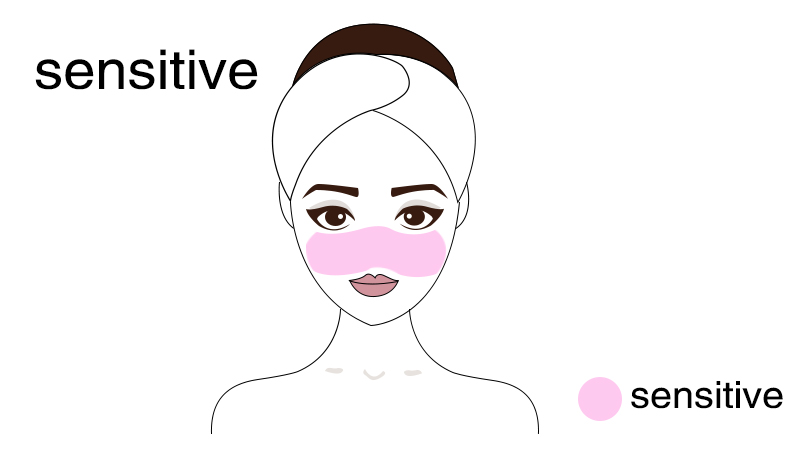
If you have sensitive skin, you probably realized it by now.
Because it is more fragile than normal skin, it requires special treatment and care.
This type of skin is characterized as being prone to irritation, swelling, or acne.
The natural oily layer of the skin is not enough to prevent dust and other particles in the air from entering and irritating your skin.
The best thing to do is consult a dermatologist to make sure what kind of products you are sensitive to.
You could be allergic to some products, which could only be diagnosed by a professional.
You should avoid any products with high alcohol content or any other kind of toner that’s too aggressive on your skin.
Pay close attention to the article because I’ll make a special note at each point for sensitive skin.
● Dry Skin
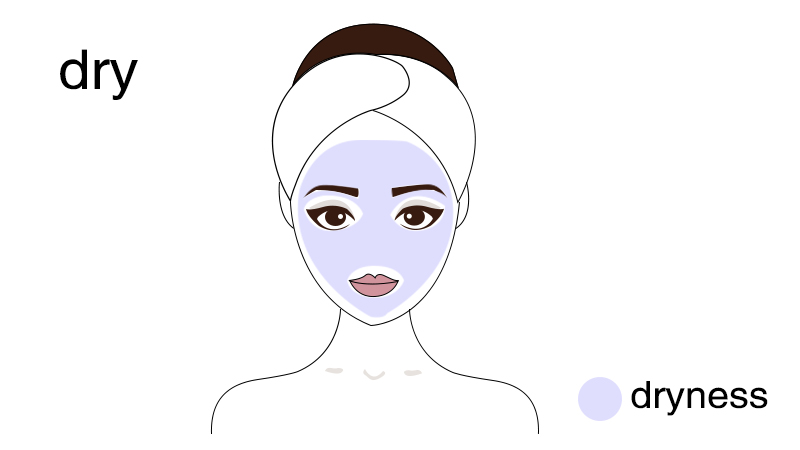
Dry skin has a characteristic greyish color that increases as it worsens.
It breaks easily and feels like patches of tight skin on your face.
Besides your genetics, dry skin is heavily affected by weather and the humidity in it.
Whether it’s hot or cold, the lack of vapor water present in the air will further increase the feeling of tightness and the appearance of cracks in your skin and lips.
● Oily Skin
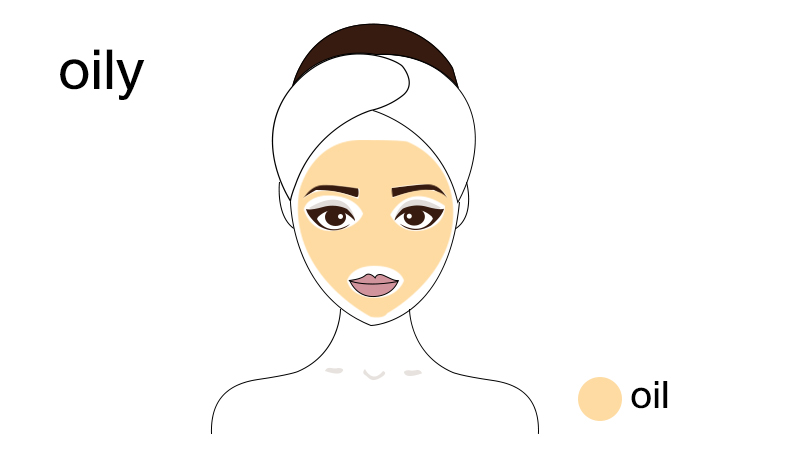
Oily skin is produced by the fat segregated through the pores by the hormones.
It is distinguishable by its shiny appearance and the greasy feeling when you touch it.
Having oily skin means that our face is protected by that same layer of oils but it is only desiderable up to a certain point.
More astringent toners, with alcohol content, will work very well in your skincare routine but avoid them if your skin is too sensitive.
● Dry and Oily Combination Skin
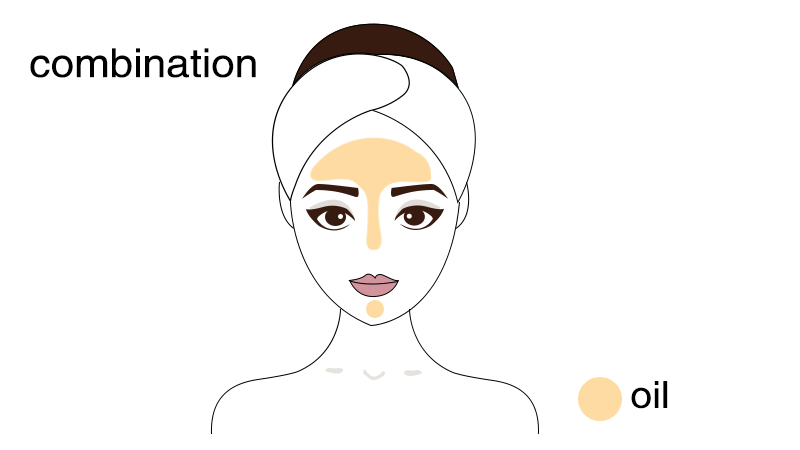
It is very frequent for people to have a combination of both dry and oily skin.
This appears as patches of your skin that feel tight and dry and others that are oilier.
If there isn’t an obvious difference, you can use all the same products for your face, emphasizing exfoliating better the oily parts and moisturizing thoroughly the dry ones.
Males are most likely to present a normal or oily type of skin but to understand what kind of skin you have, there are different methods and all complement each other for more precise identification.
The first one, watching and feeling your skin at the end of the day and when you wake up.
Watch your face closely in the mirror and feel your skin.
See whether it is shiny or pale.
You must identify where it feels whether oily or dry or if it is hydrated enough.

Another time when you must do this is after cleansing and waiting for an hour or so.
Then again you must pay attention to how your skin feels and looks.
Crucial spots where you should be checking your face are your cheeks and your ‘’T-zone’’ defined by a horizontal line drawn across your forehead and a vertical line through your nose and chin.
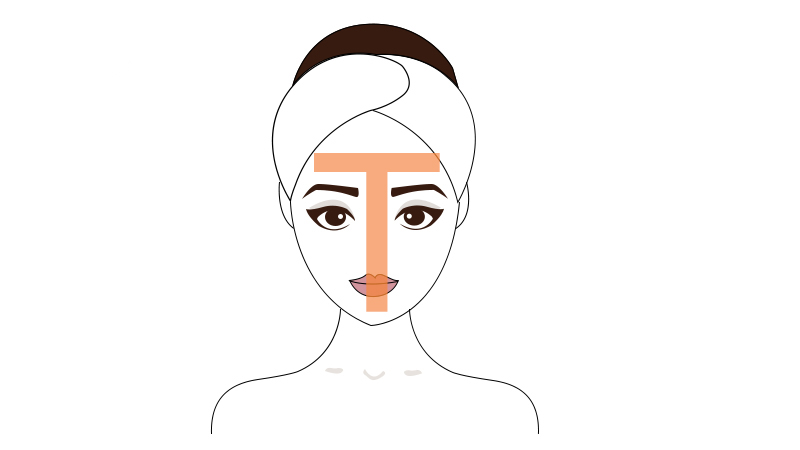
You can also pat a tissue or cotton pad to help you diagnose the number of oils in your skin.
Watch if there’s oily residue on it.
At this point, you should already have a sufficient understanding of your skin type, if not, you can always go to a boutique that offers to select the best treatment for you.
Of course, they will try to sell their products but that’s entirely up to you.

In my opinion, Kiehl’s boutiques have wonderful customer service to help you solve any doubts and their products are high quality.
Now that we have determined our skin type, we are ready to move forward with cleansing.
2. Cleansing your skin face
For a better cleansing of your face, we are going to select the right kind of cleanser.
We are going to do this based on our skin type, budget, and of course our personal preference.
Facial cleansers come in various forms: solid, liquid, foamy, and with different additives and textures.
That is why you should always test the product and wait the whole day to see how you feel.
La Roche-Posay offers all kinds of products for taking care of your skin including the EFFACLAR facial wash that works wonders in cleansing the pores in your face.
Now, regarding your skin type:
| Skin Type |
How to Clean Your Skin
|
|---|---|
| Dry Skin | For this type of skin, you should look for creamy cleansers with a lot of oils. Hyaluronic acids, aloe vera, and coconut extracts are some of the common ingredients for dry skin. |
| Oily Skin | For oily skin people, It is highly recommended that you look for a cleanser with a foamy formulation for better removal of the layer of fat. AHA, BHA (alpha and beta hydroxy acids, respectively) and salicylic acids are exfoliants that will help dry your skin a little and remove impurities and dead cells. |
| Sensitive Skin | Having sensitive face skin means that we are going to look for hypoallergenic cleansers. They come in solid bars, as gel or foam. If you don’t have the opportunity to test the product for yourself before buying, look for brands that guarantee you are hypoallergenic. |
| Normal/ Combination Skin |
There is no difference here, if you have a normal kind of skin or a combination, the best choice for a cleanser is one with a gel-like formula. AHAs and BHAs also aid in the cleansing of the pores in your skin. |
3. What does exfoliating your skin mean and how to do it?
Exfoliating your skin after a good cleansing not only helps reach deeper layers of skin but also can increase the production of collagen that makes our face skin look healthy and radiant.
It is very important not to exfoliate more than once or twice a week to prevent irritation of the skin.
Doing this will help you get rid of pimples and blackheads, and of course, prevent them from reappearing.
Like with cleansers/washers, we must choose our exfoliator minding our type of skin:
| Skin Type |
How to Exfoliate Your Skin
|
|---|---|
| Dry Skin | Exfoliating dry skin is essential for removing dead cells on the top layers of your face, but you must do it with care to avoid microtears. The other important thing that we must mind is that dry skin is more sensitive to physical abrasion, so try to choose exfoliators that don’t have a sand-like texture. Instead, search for ones with glycolic acid. |
| Oily Skin | When choosing an exfoliator for oily skin, we must look for ones with acids like salicylic or BHA to help the cleansing. Some exfoliating creams have an additive with a texture like grains of sand that will work wonders on your skin. This type of skin tolerates more exfoliation sessions than others, even three or four times per week. Either way, don’t overdo it as it can irritate your skin. |
| Sensitive Skin | Sensitive skin should not be exfoliated very often, maybe twice a week is too much. If you have this type of skin, to avoid irritation, start exfoliating only once each seven or ten days and see how it goes. As per ingredients, you should be looking for exfoliators with lactic acid that is gentle enough to cleanse your skin without irritating it. |
| Normal/ Combination Skin |
Normal skin can handle most of the ingredients present in exfoliating creams pretty well. Nonetheless, we have to take care, not to overuse products with strong acids. Salicylic, lactic, and glycolic are some of the acids you can go with without any problems. |
4. Selecting and applying toner
The use of toner after a good cleaning will help get rid of remnants of oil as well as remove dirt from the pores of your skin, to help prepare it for better absorption of skincare products.
Besides, it will hydrate your skin and give it a shiny clean look.
Using toner increases the effectiveness of your skincare routine.
Like in previous steps, to select the correct toner, we must do so with our skin type in mind:
| Skin Type |
How to Select Toner
|
|---|---|
| Dry Skin | If your skin type falls in the category of dry skin, then you should be looking for toners with a moisturizing effect. In this case, you should be avoiding products that contain alcohol, sulfates, or sodium. These components will dry even further and irritate your skin. Instead, rose water, glycolic acid, peptides, and jojoba oil are some of the ingredients you should be looking for in your exfoliator of choice. |
| Oily Skin | Having sensitive skin, you should avoid products containing any fragrances, alcohol, and acids. Look for toners that are hypoallergenic and contain ingredients like glycerin, green or white tea, aloe vera, and antioxidants. |
| Sensitive Skin | In this case, you should be looking for a refreshing toner. The oily skin type allows a mild alcohol content but not much. If the alcoholic concentration of the toner is too high, it will dry your skin and incentivize the production of oils. Some of the ingredients you should be looking for are sodium hyaluronate, PCA, and AHA. Also, make sure there are no oily ingredients present in the toner’s formula. |
| Normal/ Combination Skin |
Selecting a toner when you have a normal skin type will depend mostly on the weather and personal preferences. If the conditions where you live are somewhat constant throughout the year, you can use the same toner all year. But if the weather changes a lot between seasons, you can use a refreshing toner during summer and a moisturizing one during winter. |
5. Choosing the correct moisturizer for your skin
Moisturizing your skin is essential to prevent the cells from oxidation and keep a healthy and beautiful look.
Especially after all the cleansing and exfoliation, our skin needs the layer of protection oil usually offers.
The best type of moisturizer for us depends on our skin type.
| Skin Type |
How to Choose Moisturizer
|
|---|---|
| Dry Skin | Having dry skin means that you should be looking for a moisturizer with an oily base that will keep your skin hydrated for longer periods. |
| Oily Skin | If you have sensitive skin, you should go for moisturizers with a water base and of course hypoallergenic. Aloe vera is a great ingredient for sensitive skin. |
| Sensitive Skin | If your skin face is on the oily side of the spectrum, you should be looking for lightweight moisturizers that are refreshing and water-based. |
| Normal/ Combination Skin |
The moisturizer you use, if you have a normal face skin type, may vary through the seasons. You can use a lightweight, water-based moisturizer during summer and an oily-based one during winter to prevent cold from tearing your skin. |
6. Protecting your skin from the sun
Ultraviolet rays are among the most corrosive things we encounter every day.
They degrade and oxidize almost anything they touch.
Our skin is not safe from them either, that’s why the use of sunscreen is very important.
If you are a person that spends most of your day outside you should consider using a cream with sun protector factor (SPF) for daily use.
UV rays accelerate the aging of your skin, making it look dry, and greyish, favoring the appearance of wrinkles and spots.

Following the recommendations given before, choosing sunscreens also depends on your skin type:
| Skin Type |
How to Look for Sunscreens
|
|---|---|
| Dry Skin | an oily-based one |
| Oily Skin | a water-based formula |
| Sensitive Skin | hypoallergenic cream |
| Normal/ Combination Skin |
you may find yourself switching between two sunscreens as seasons change |
The number of SPFs you must use also varies according to the weather and the color of your skin.
- If your skin is on the clear side, it means that you need to use a 40 SPF or higher during summer and a 20-25 SPF for sunny days in winter.
- Otherwise, darker colors of skin are more resilient to the wear of UV rays. Nonetheless, skin still needs more protection if the sun rays are too strong, so a 30 SPF sunscreen for summer and a 15 SPF will keep your skin safe. Apply the cream to all your face, neck, and ears making sure it is evenly distributed.
7. Skincare treatment in five simple steps
Now that you are informed about your type of skin and the products you need, let’s treat our skin face with a good cleanse.
The steps below should be done once or twice per day except for the exfoliation.
Step 1: First, make sure you remove all your makeup and move your hair out of the way by using a headband or bandana if necessary, and let the water run until it is neither too hot nor too cold.

Using warm water, damp your face in it and apply your cleanser of choice in small circles throughout your face.
You can also incorporate a facial massage into your routine.
To do this, make upward movements pressing your fingers on your forehead.
Next, massage with your fingertips from your nose towards your ears.
Repeat this last movement on the lower part of your face.
And last, massage your neck with vertical movements along the collarbone.
Rinse and slightly dry your face.
You need your face a little damp for correct exfoliation and application of the toner.

Step 2: Following the procedure done with the cleanser, with your face still a little wet, apply the exfoliator massaging your face and drawing small circles with your hands.
Try to pay keen attention to the most oily parts of your face.
Once you are finished, rinse and lightly dry your face.
Remember not to exfoliate more than two or three times per week!

Step 3: With our faces exfoliated, we are going to grab a tissue or a cotton ball or pad, and damp it with our toner.
It doesn’t have to be dripping wet. We are going to apply the toner through all our faces and leave it to dry on its own.

Step 4: With our now clean face we are going to apply the moisturizer we chose.
You will need only a few small dots of cream to cover your entire face. Rub it gently in small circles and let it dry.

Step 5: If you must step out during the day, make sure you wear sunscreen if necessary!

It’s a matter of the fact that facial skincare requires time and dedication.
Not only will you see the effects of the skincare treatment soon enough, but it also will give you time to keep in touch with your femininity.
Believe me, once you see the effects on your face you’ll be fascinated with the skincare treatment world!
Do you follow your own set of steps? What products do you use and why? Did you find this helpful?
If so, please comment below, I love to know how readers feel.
I hope you all have a wonderful day and take care of yourselves, sweeties!
Written by Tina Munova
Tagged With:Crossdressing Skincare , Different Skin Types
- How to be a Trans Femboy Influencer in 2024
- 7 Easy Ways to Level Up Your Sexy Femboy Beauty Routine Instantly
- How to Make a Fake Pregnant Belly Look Real: Tips for Every Trimester
- Game On: Sporty Tips for Crossdressers Attending the 2024 Olympics
- How to Pose for Lewd Cosplay Photos for Crossdressers
- How to Explore Crossdresser Bondage Safely and Sensually
Established in 2009, We are a recognized manufacturer and seller of professional crossdressing products.
It is our aim to become not just the most creative manufacturer but also a very considerate seller, as we provide the best quality products for crossdressers all around the world.


















 Breast Forms
Breast Forms  Body Suit
Body Suit  Realistic Mask
Realistic Mask  Femini Girdle
Femini Girdle Hip & Butt Enhancement (8)
Hip & Butt Enhancement (8) Penis Prosthesis
Penis Prosthesis Fake Muscle
Fake Muscle Bikini
Bikini  Wig
Wig  Corsets
Corsets Course
Course service@roanyer.com
service@roanyer.com +8618652200711
+8618652200711 Facebook
Facebook YouTube
YouTube Twitter
Twitter Instagram
Instagram




